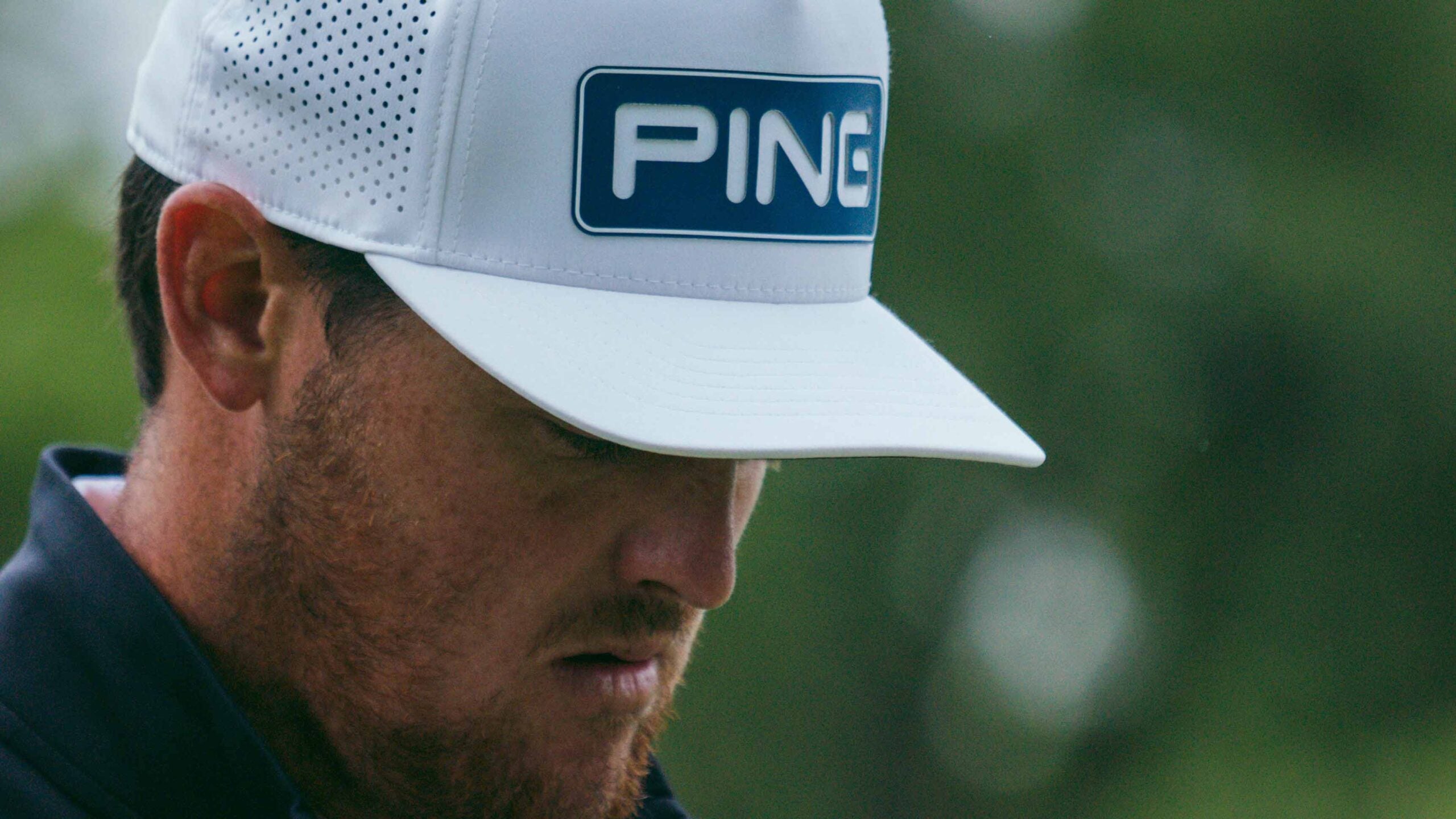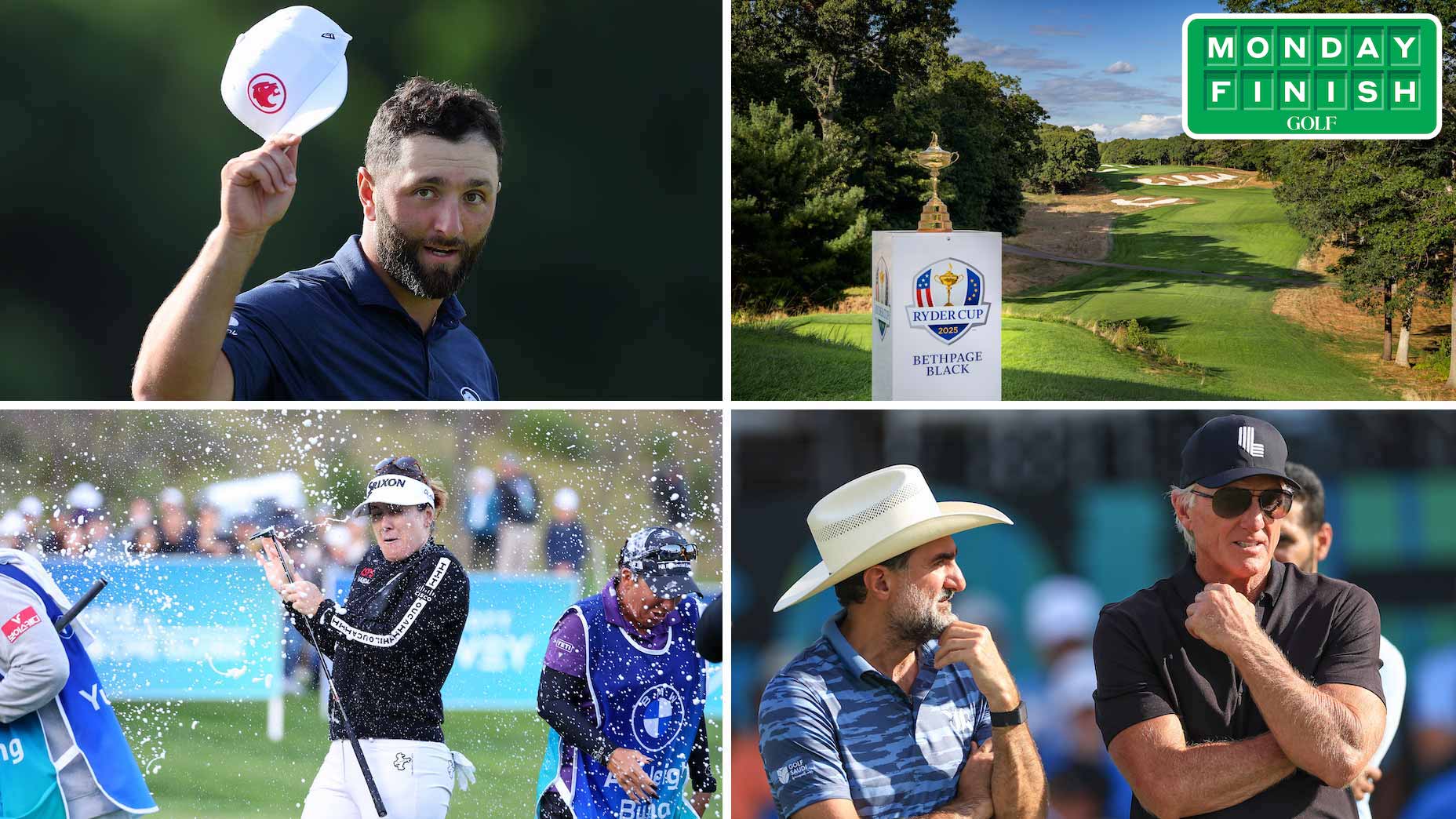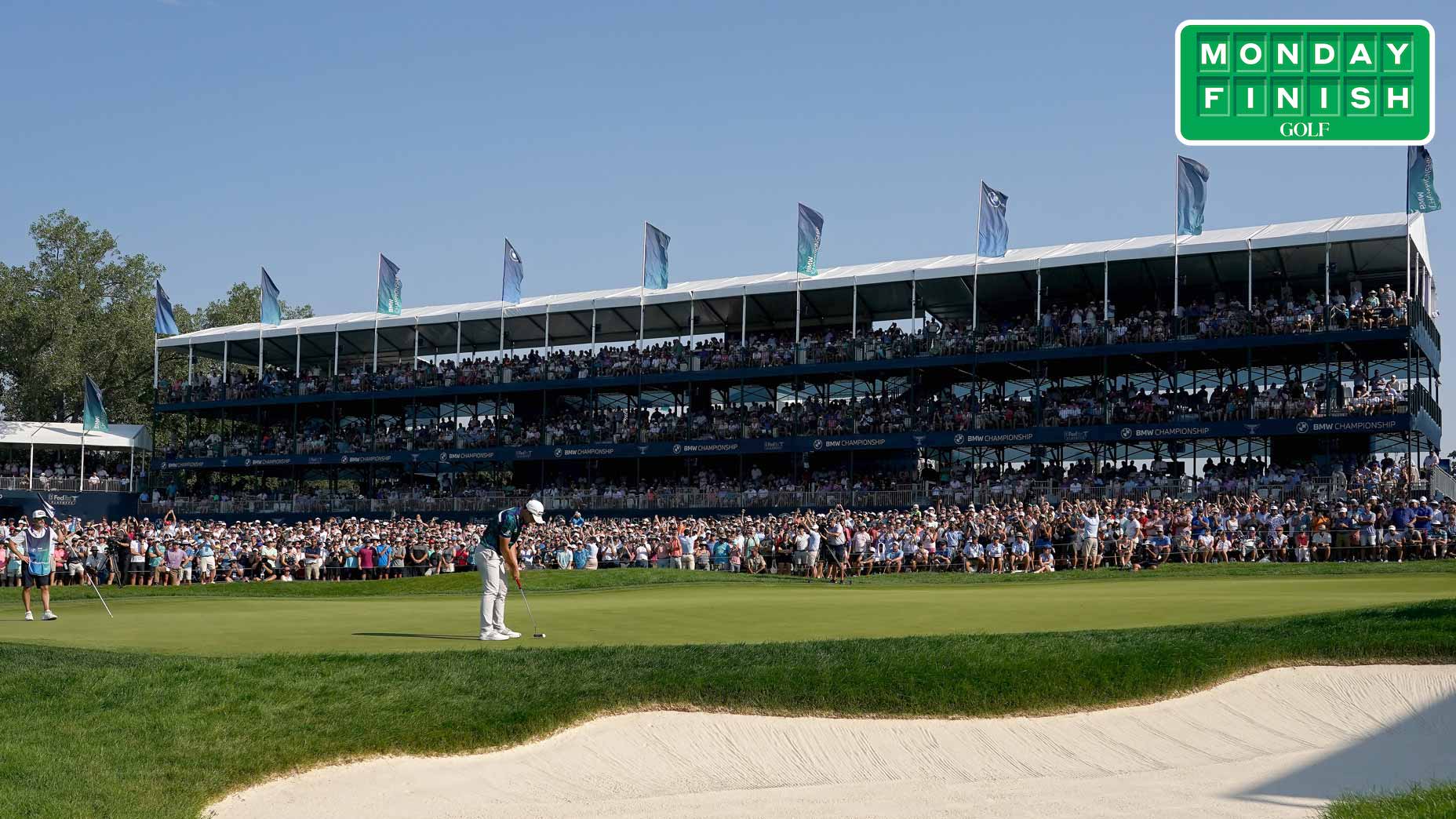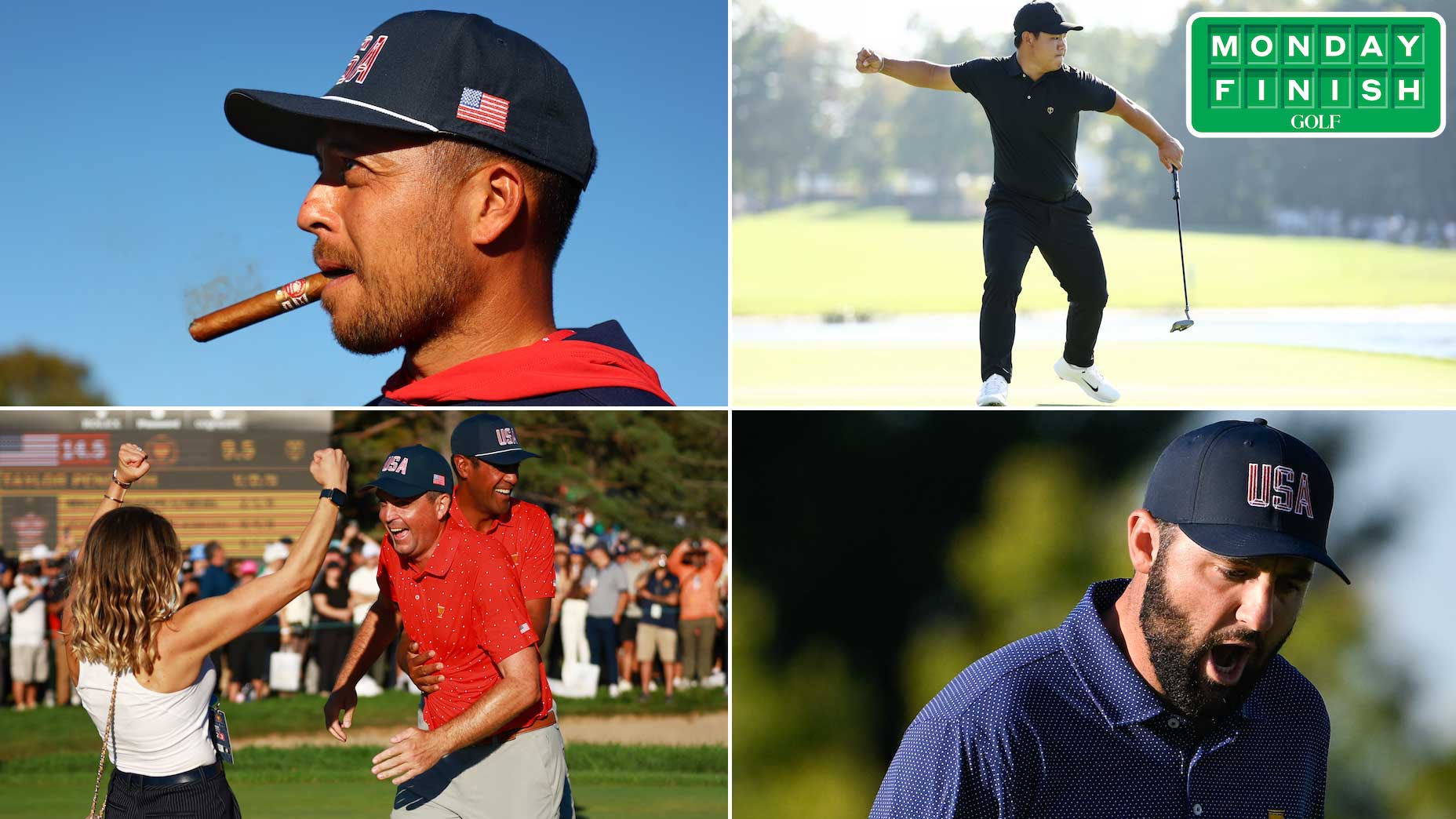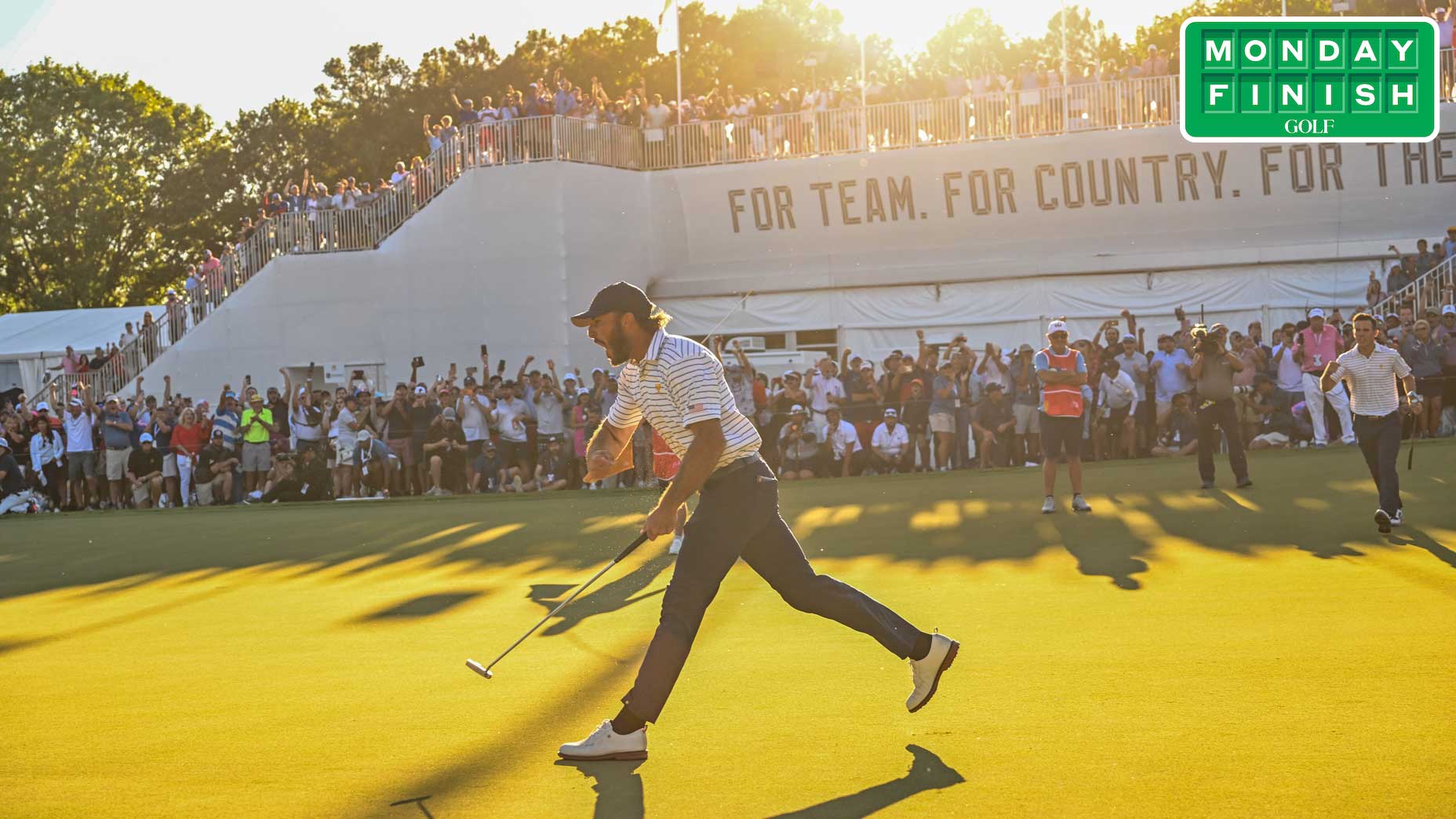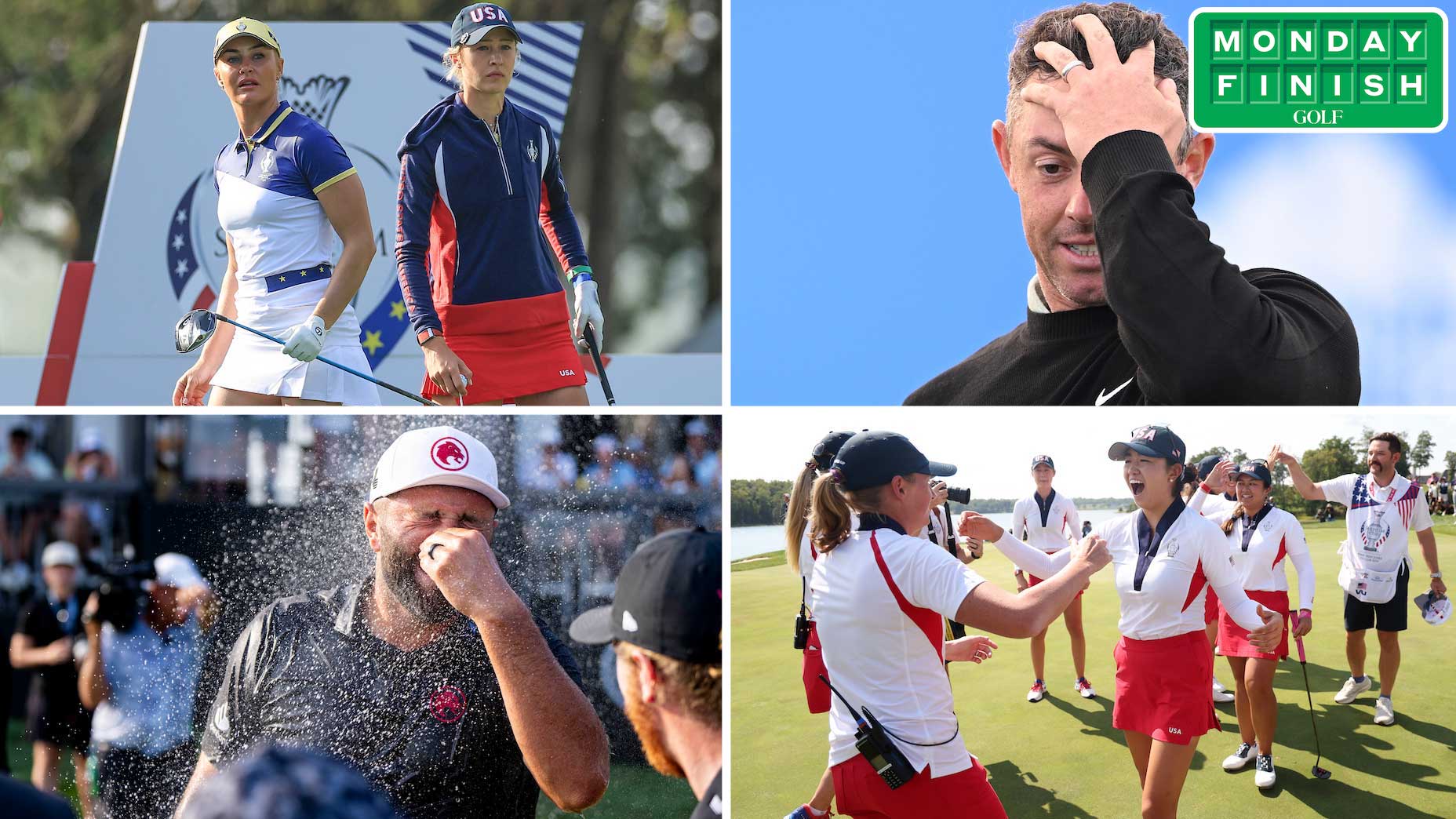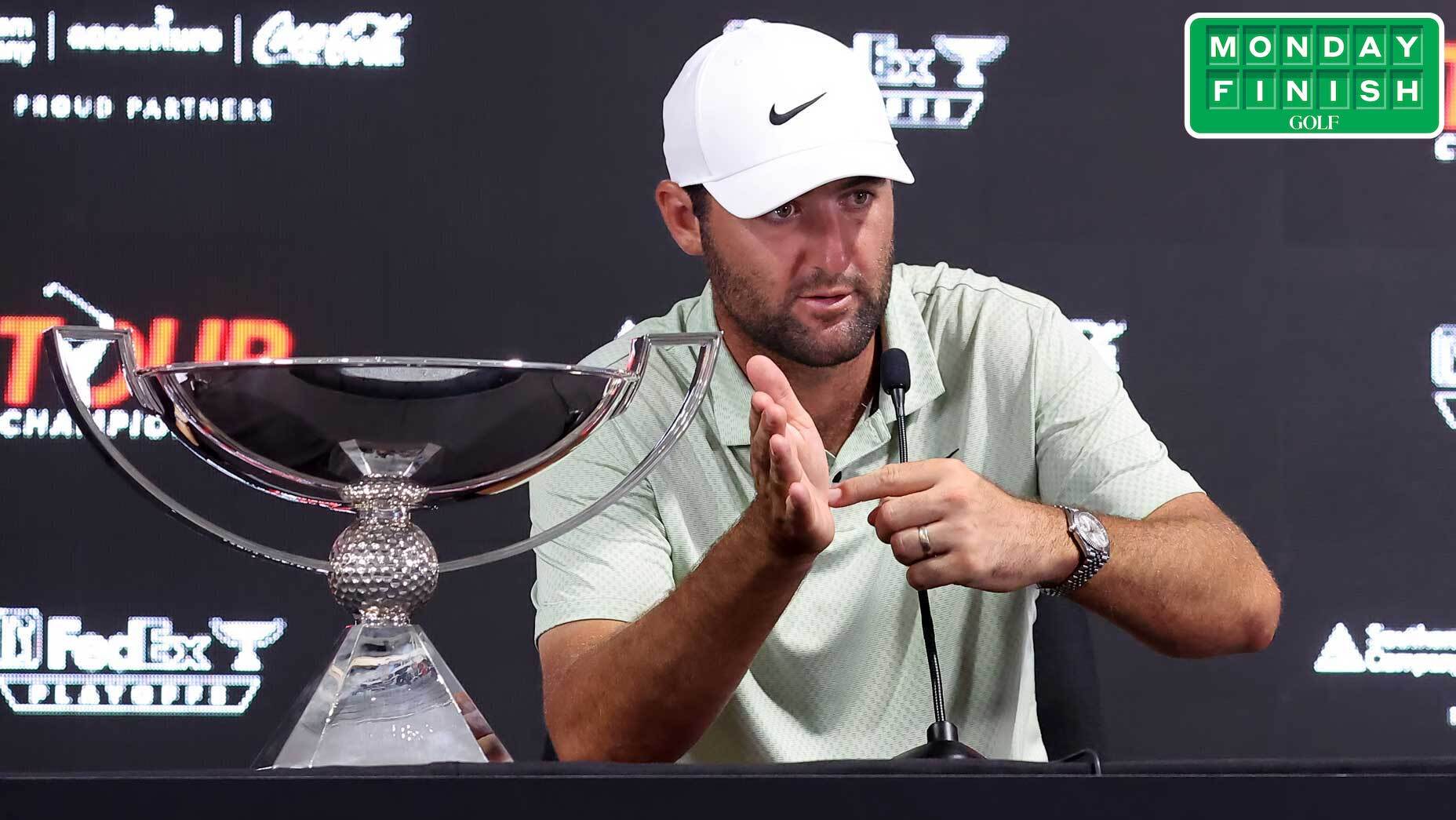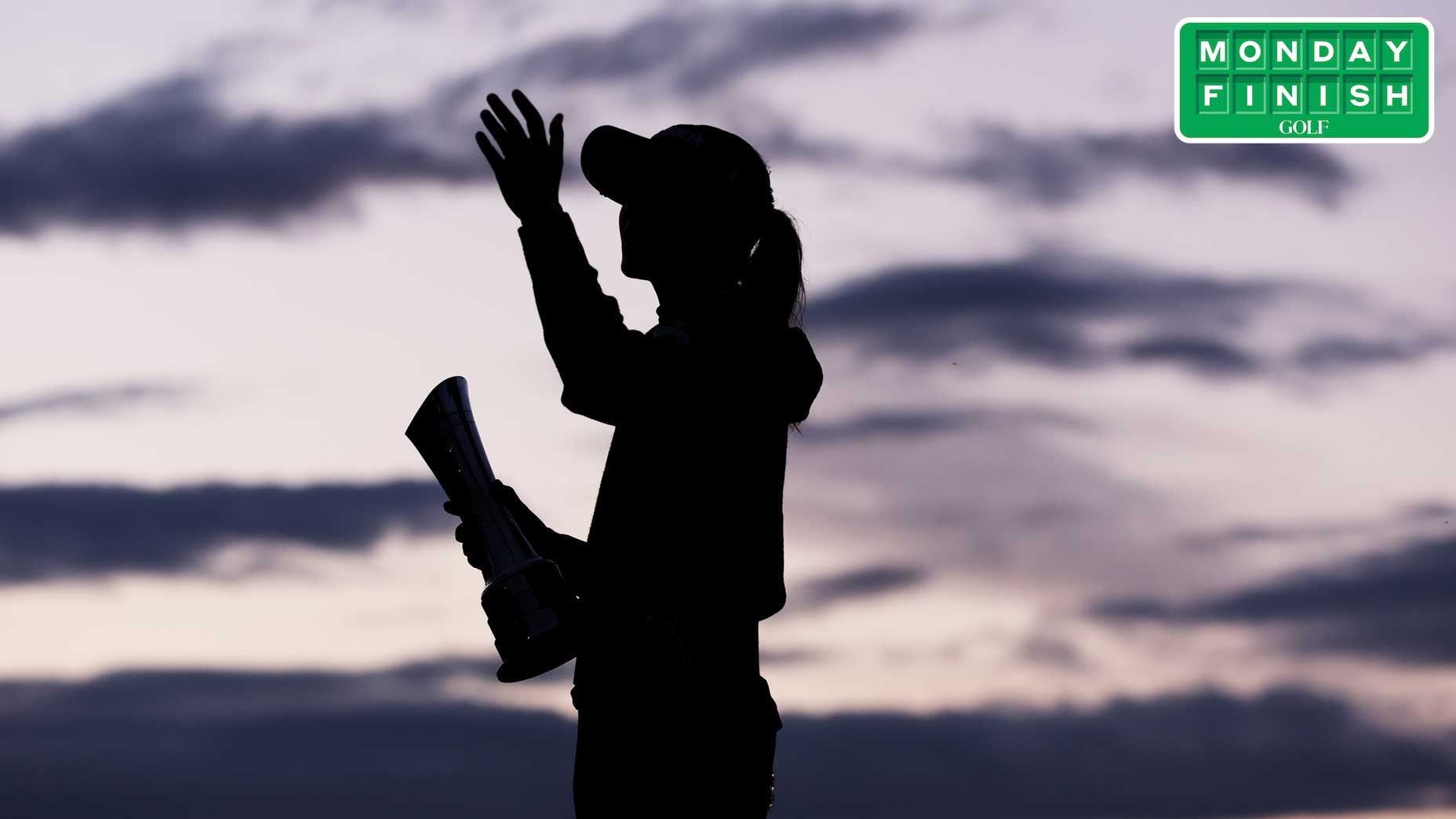TULSA, Okla. — The door to Southern Hills’ locker room swings shut behind Mito Pereira. At last, something separates him from the tens of thousands of golf-watchers outside. From the press conference questions. From the TV cameras. From the Netflix cameras, too. Even from the well-meaning friends and family who’d rallied to his side. Some 30 minutes after a devastating 72nd-hole double bogey cost him the PGA Championship, Pereira finally has a moment to himself.
He closes his eyes and holds them shut for a split second. He exhales. He’s processing what just happened, but his mind is racing.
Pereira isn’t technically alone. Before the week began I’d pitched the idea of doing daily interviews to see how a PGA Tour rookie would tackle a major championship. He was game. I hadn’t considered that he might actually win. And I really hadn’t considered that he’d face something rare and terrible by week’s end: heartbreak on one of golf’s biggest stages.
I break the silence.
What are you thinking right now?
He musters a grin.
“S—.”
MONDAY: TRAVEL TO TULSA
Pereira travels to Tulsa from Dallas, where he’d finished T17 at the Byron Nelson. This part of the leaderboard is becoming familiar territory for the 27-year-old; since his third-place finish in the first event of the PGA Tour season he has logged 10 top-30s but zero top-10s. Pereira’s been playing consistently well — he just hasn’t strung it all together.
A few months just outside contention doesn’t mean there’s anything wrong with Pereira’s game, nor does it indicate that he can’t win. He showed his nose for victory on his path to the PGA Tour, winning three times on the Korn Ferry Tour in the 2020-21 super-season to earn a special “battlefield promotion” straight to the big leagues. When he’s near the lead, he tends to close it out.
Pereira decides to lay low on Monday, eschewing an extra practice round at Southern Hills for the benefits of rest. He checks into a rental house he’s sharing with fellow Chilean Joaquin Niemann and Sebastian Munoz, a 29-year-old from Colombia. They share lodging frequently, with Carlos Ortiz, a 31-year-old pro from Mexico, often joining them as well.
“Carlos is the most picky, so he chooses the houses,” Pereira says. “He cares about getting the nice house. That works well for us.”
There’s a kinship among the Tour’s Latino contingent, a young and increasingly talented group. A record six Latin American players (the aforementioned four plus Abraham Ancer of Mexico and Jhonattan Vegas of Venezuela) teed it up at Southern Hills, and several will end up on this year’s Presidents Cup team. There are also perks to shared quarters. They can avoid the loneliness of a hotel room, get their collective minds away from golf and split the cost of hiring their chef Rodrigo, a wizard from Guadalajara, Mexico.
Pereira’s eyes light up at the mention.
“He makes everything. Everything. We don’t even tell him what to cook. He just does it. We come home and Rodrigo just has something amazing out.”
TUESDAY: PICKING TARGETS
Housemates Pereira, Niemann and Munoz tee off just after 8 a.m. I meet them at the turn. Pereira’s wearing a Ping hat, Under Armour apparel, a scruffy brown beard and a mischievous smile. He asks the first question.
“Okay, so. What do you want to know?”
Mostly, I say, I want to hang out and watch. But I do have a practice-round question: What’s the game, and who’s winning? Pereira says they’ll play games most days, birdie games or, if they have four, team games.
“It spreads around, but lately Joaco’s been winning,” he adds.
But not today. Because Southern Hills is a relative stranger (Pereira did play here once, in the 2015 Big 12 Championship), they’re keyed in on targets off tees and the slopes around the greens. A side match would be too much. Today is about learning, and it’s about fueling up, too; when I catch up with the group, Niemann is skipping the 10th hole to grab a sandwich. At 23, he’s the youngest of the group but the highest-ranked at world No. 16. He comes jogging up the cart path and slips under the rope line, to-go box in hand.
“Don’t worry,” he shouts to Pereira, out of breath. “Saved you some.”
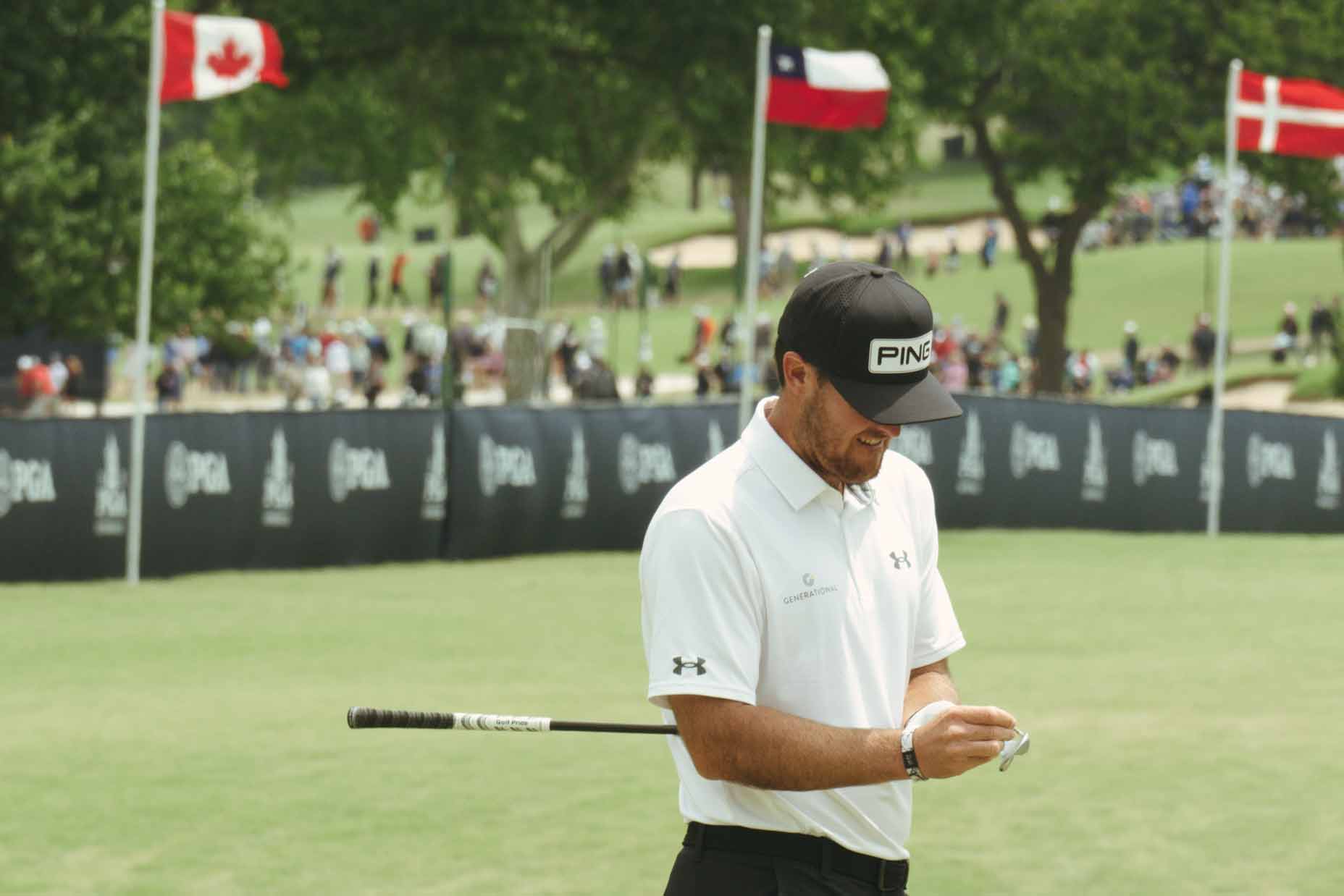
The two have known each other for more than a decade, when they were among Chile’s top young talents. Niemann was 10, Pereira was 13 and they each showed limitless potential.
“I looked up to Mito — we all did,” Niemann says on the next tee. “When we were kids he would win everything in Chile. That was before he quit, though.”
Ah, The Time Mito Quit. This is the anecdote that will get recycled throughout the week: When Pereira was a teenager, he stopped playing golf altogether. He’d loved the game from an early age, first picking up a plastic club at 2 or 3, following his dad around the course. His father was a 7 handicap or so. It didn’t take long for Mito to get good. But it did take a lot of practice. Pressure mounted, too.
“Ever since I was three years old, just nothing but golf, all the time,” he says.
In 2006, Pereira was runner-up at the Optimist International Junior Golf Championships’ 10-11 year-old division. Two years later he won the 12-13 division. Two years after that he finished second in the Junior Open Championship in Fife, Scotland.
At 14, he went away to the prestigious IMG Academy in Bradenton, Fla. After a few months, he returned to Chile, burnt out and fed up. He put his clubs down in the garage.
“I just got bored of it,” he says. What did he do instead? “Everything. School. Soccer. Tennis. I was 15! When you’re 15, you get into social stuff, life, parties, girls.”
During his two years away, Mito met a girl named Antonia, who didn’t even know he was a golfer.
“I started dating Antonia when I was away from playing, so I know she doesn’t just like me because of golf,” he says, cracking up. “It’s just because I’m handsome.” The two got married this January.
But Pereira insists his hiatus was never permanent. “Here’s the weird thing,” he says. “When I wasn’t playing and people would ask me what I was going to do, I’d still tell them I was going to be a pro golfer.”
To hear Niemann tell it, Pereira didn’t announce he was coming out of retirement or even really make a conscious decision to do so. Instead, one day a friend called and asked if he wanted to go play. Pereira said yes, retrieved his clubs from the same place he’d deposited them two years earlier and headed back out. This time, the choice was his. That made an important difference.
Tuesdays are the days I wonder about golfers and boredom. Course prep, range work, hours hitting chips and putts and mapping out strategy; it’s a lot of work and none of it is particularly exhilarating. Given Pereira’s history, I ask him if the Tour life ever gets too slow.
Never, he says.
“Oh no, I like this. Put it against anything else, y’know? Any other job? Sure, you can get tired of the travel, but I like this life very much.”
WEDNESDAY: FINAL PREP
This isn’t technically his first major; Pereira qualified for the U.S. Open in 2019, shot 77-72 and missed the cut. But he’s a different player now. And he’s much more comfortable — if a bit nervous.
“You want it to be surreal, because it’s a major, and it is,” he says. “But at the same time, you don’t. Because you have to play a golf tournament. I’m in between being impressed with it all and just — forget it, it’s just a tournament, I’m just playing.”
His caddie Scott McGuinness nods in agreement. He thinks his guy is ready. McGuinness is an affable Australian and got his start in the pro looping ranks in 2005 on the bag of Nick Flanagan. Like Pereira, Flanagan earned a three-win battlefield promotion to the big Tour. McGuinness came with him. In the years since, he has caddied for everyone from John Daly to Chez Reavie to a slew of Aussie pros and, most recently, Scottie Scheffler. When Pereira’s team starting poking around for a full-time caddie, McGuinness came highly recommended. So far, so good.
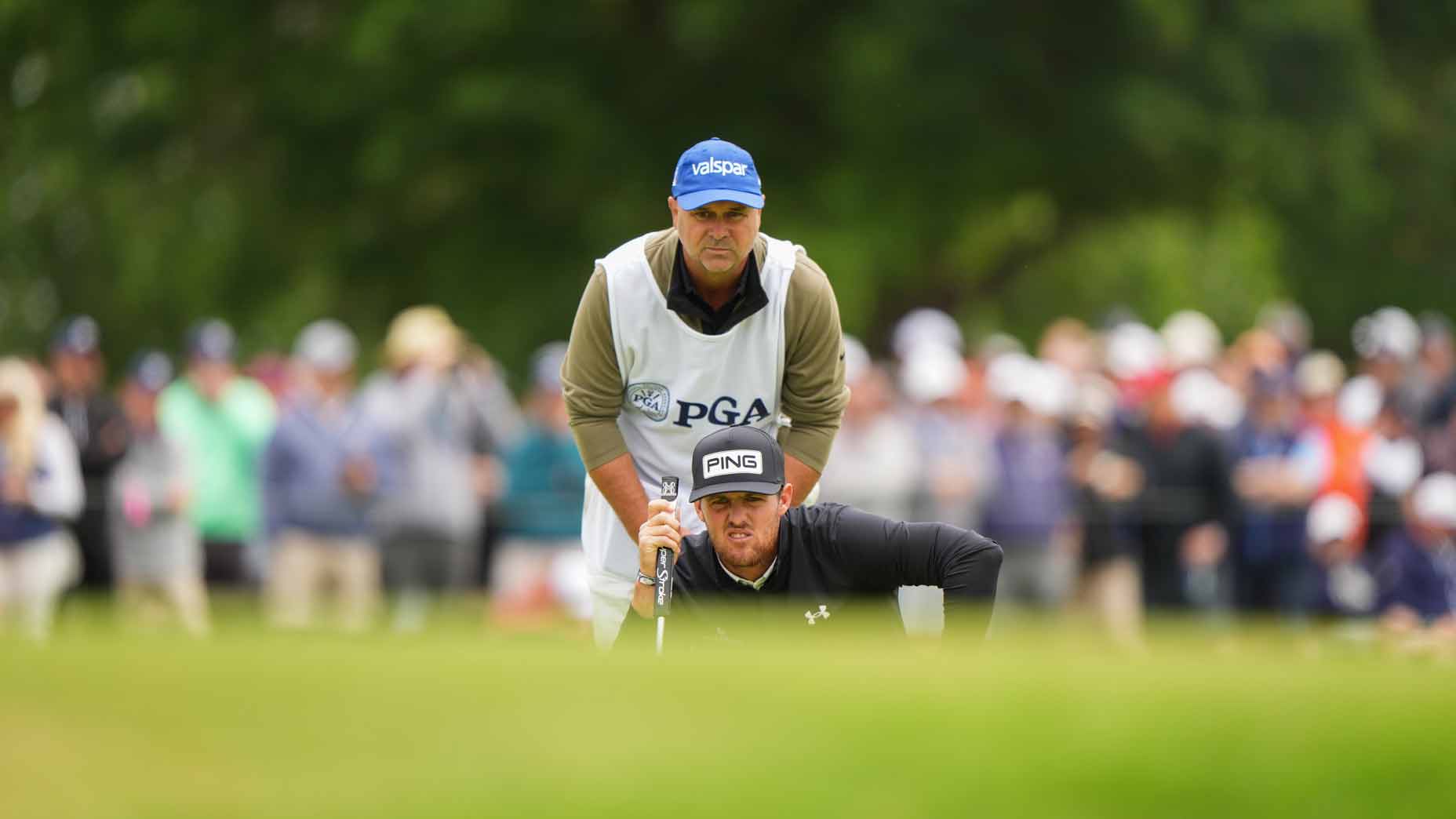
Southern Hills, McGuinness says, seems to fit Pereira’s eye. It’s a big course but mega-length isn’t a requirement. Hitting fairways will help. When he’s playing well, Pereira’s good at that. He’s always been a dart-thrower with his irons. And he figures the giant slopes on the greens could neutralize any advantage other pros would have there. In other words, he thinks it could be a good week for his guy.
“It’s not an easy course, and I like that,” Pereira adds. “I think it sets up well for me because it’s not, like, a putting competition.”
He returns home to Chilean seabass and an early bedtime. Game time.
THURSDAY: MAJOR START
Mito is up before dawn; he likes to get to the course two hours before his tee time and this morning has a 7:33 first-tee appointment with Englishman Sam Horsfield and club pro Nic Ishee. It’s a fortuitous draw; they’re on the better side of the weather and it’s a warm morning, even for Oklahoma.
The crowd vacuum of Tiger Woods, Jordan Spieth and Rory McIlroy is three groups behind them off No. 10. Suffice it to say the 7:33 group has just a modest following. Horsfield shoots 74 and Ishee shoots 78 but Pereira starts steady and finishes hot; he nearly holes his tee shot at the long par-3 14th and plays the final six holes in two under par to post 68, just three shots off the lead. He’s pumped.
“I’m really happy with my game,” he tells reporters. “I just want to do the same tomorrow and keep striking the ball really well.” He’s asked about the contingent of Latin Americans and describes their bond.
“We’re basically a team,” he says. “We come from another part of the world, so we come here and we just support each other.”
Niemann shoots 68, too. There are good vibes at home. Rodrigo preps seafood risotto for dinner and they get to bed early again. Don’t mess with a good thing, right?
FRIDAY: ‘IT’S BIGGER NOW’
I wait for Pereira by the stairs that lead away from the media compound. We walk up toward the locker room.
How many interviews was that?
He glances back and I can see him counting through them: live hits on CBS and Sky Sports. An interview with SiriusXM. A session with the pool of reporters who want to learn his story. (“I remember my first tournament was at six; first international tournament at eight,” he’d told one reporter, then realized he didn’t want to run through his entire chronology. “…then kept going,” he finished.) Then he’d stopped by Golf Channel…and so on.
“Eight?”
That must be the most he’s ever done.
“Definitely.”
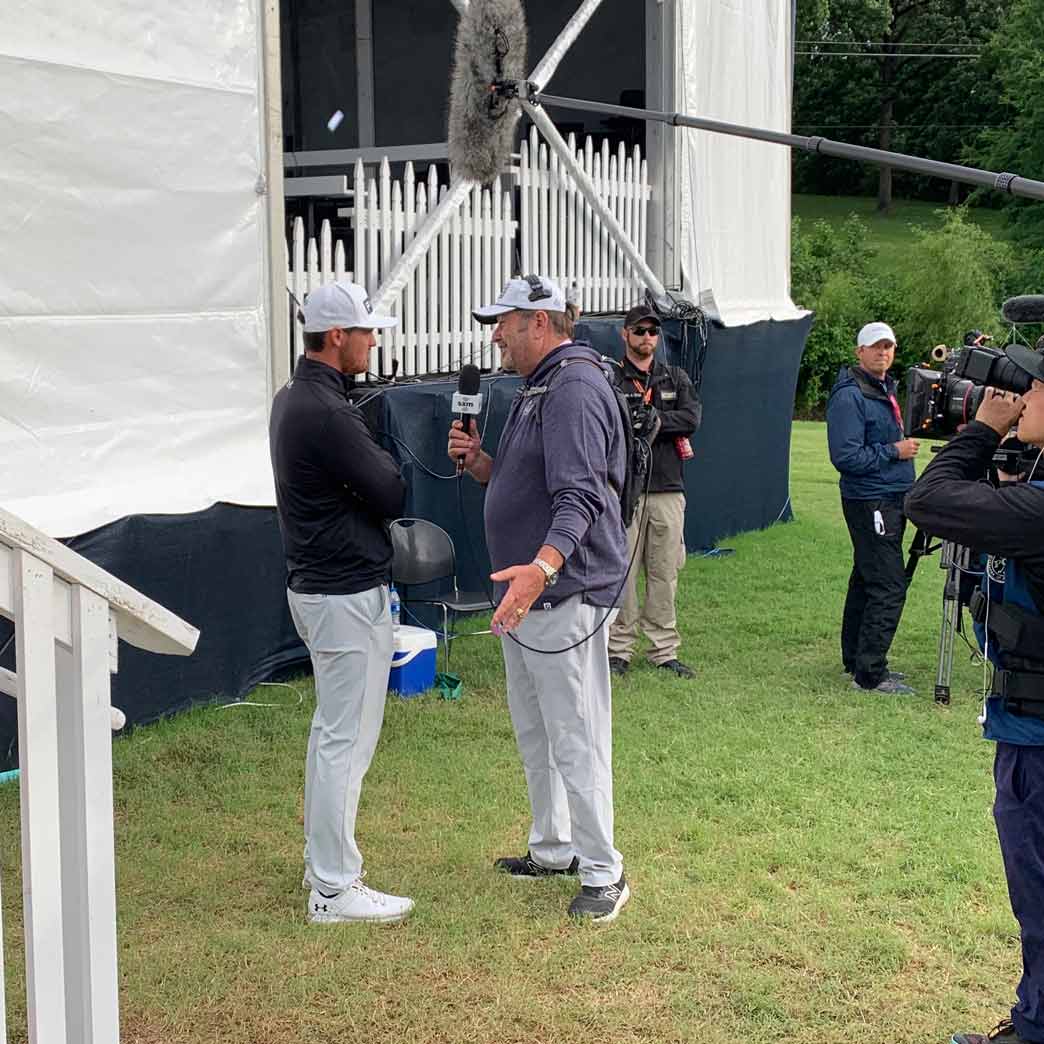
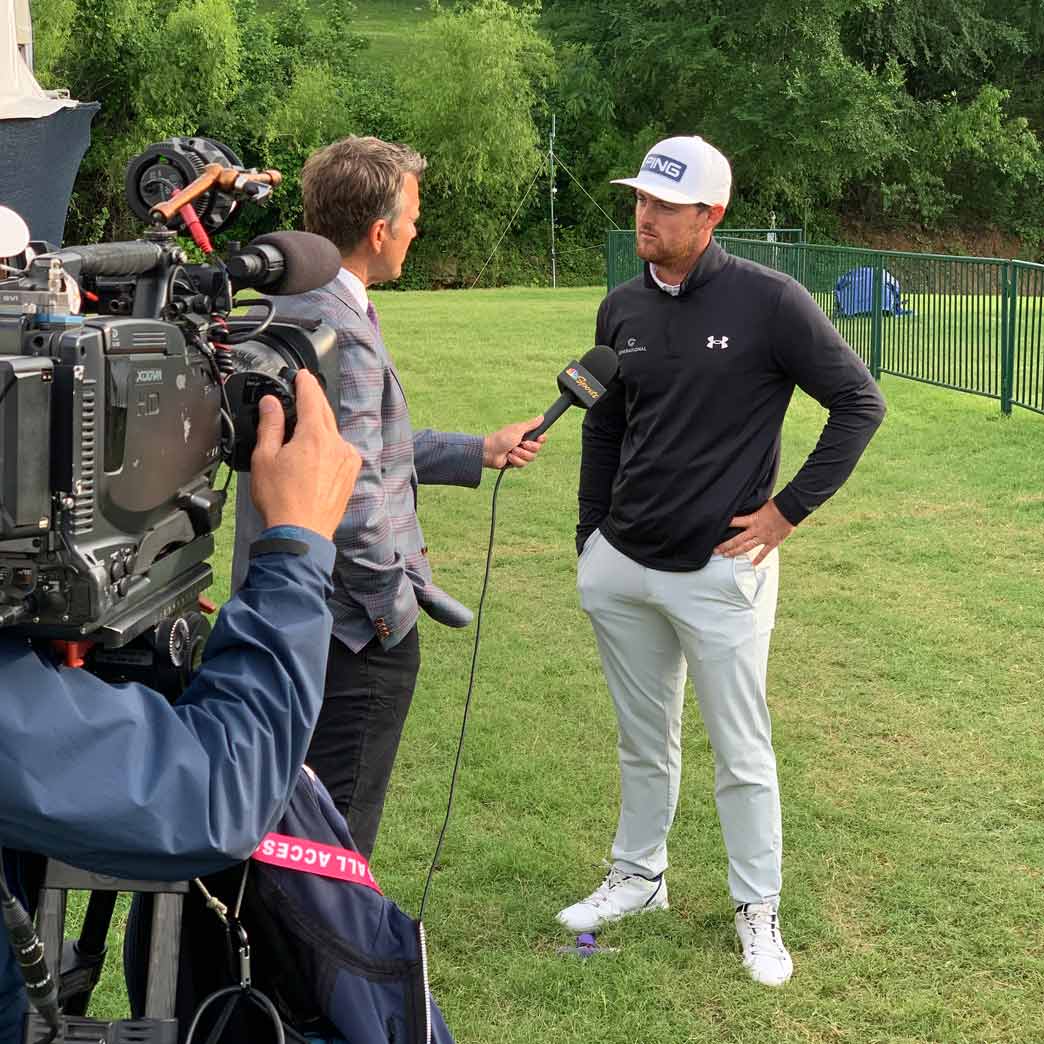
I’m trying not to add a ninth interview but tell him I’ll just walk with him. He’s chipper. He’s grinning, hat slightly askew, basking in the rush of a second-round 64, of four birdies in his last eight holes, of solo second place, eight under par. It’s been a dream day. I’m curious if he was looking at leaderboards as he poured in birdie putts, watching his name climb toward the top.
“Of course,” he said. “I mean, f— it, I’m in a major, right? It was nice.”
I point out that earlier in the week he thought it felt like any other tournament. He shrugs.
“I tried to. I guess it’s bigger now.”
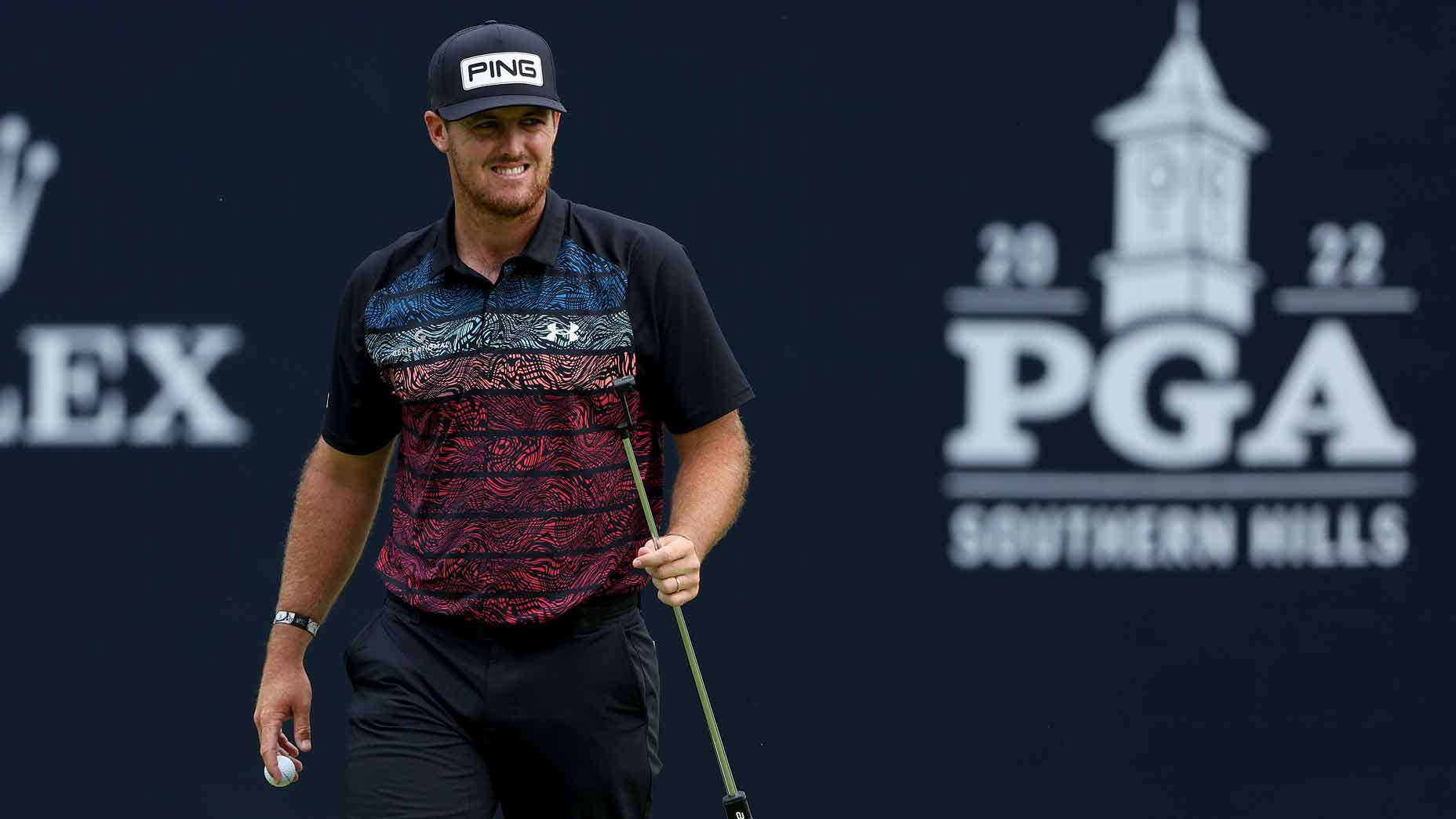
If the round hadn’t taken it out of him, the interviews would have. He must be exhausted.
You tired?
He shrugs again. “Not really. I’ve been sleeping 11 hours a night.”
He’s hungry now. No more interviews. No range balls. Straight home to dinner.
“Let’s see what Rodrigo’s cooked up.”
SATURDAY: ROLLERCOASTER
Saturday starts cold, damp and gusty. Tiger Woods shoots 79. Jon Rahm shoots 76. Antonia runs to Dick’s Sporting Goods in the morning to buy Pereira an extra layer to wear beneath his Under Armour shirt. (Niemann is far more prepared; he proudly shows me his long underwear and his neck warmer as he heads to the first tee.)
Good weekday rounds mean late weekend tee times, and Pereira is alongside Zalatoris in the final pairing at 1:50 p.m. I see him as he arrives at the course, curious how he’s slept now that it’s all getting a bit more real.
“Only nine and a half hours last night,” he says. If he’s nervous, he’s hiding it well.
His round is a rollercoaster. Birdies at 2 and 5 get him to 10 under and in the outright lead by four shots. Then he seems to grasp the reality of his position and tighten up, ever so slightly. He three-putts 8. He leaves wedges short at 9 and 10. He hits his approach long at 12. Four bogeys in five holes.
At 13, Zalatoris cans a 35-footer for the first birdie of his day; suddenly he and Pereira are tied again at six under. But watching that putt drop seems to re-center Pereira. He grits his teeth and jars a 17-footer of his own, regaining the outright lead.
Pereira stripes a long iron at the next hole, too, leaving himself six feet for birdie. Cash. Now he’s vibing again. The crowd is pulling for Zalatoris — 70-30, Pereira guesses — but the Texas Tech faithful are vocal in their support for Pereira. He only attended for one year, so it’s hard to know how much he identifies as a Red Raider, but no matter. We’re in Oklahoma, and it’s not his choice. Pereira may as well be a Lubbock native.
After pars at 15, 16 and 17, Pereira hits a towering 5-iron from 214 yards into the 18th, leaving himself 25 feet for birdie. The crowd surrounds the green. He’s already two shots clear of the field, and now, as his putt rolls toward the hole, bang! Birdie and a three-shot lead.

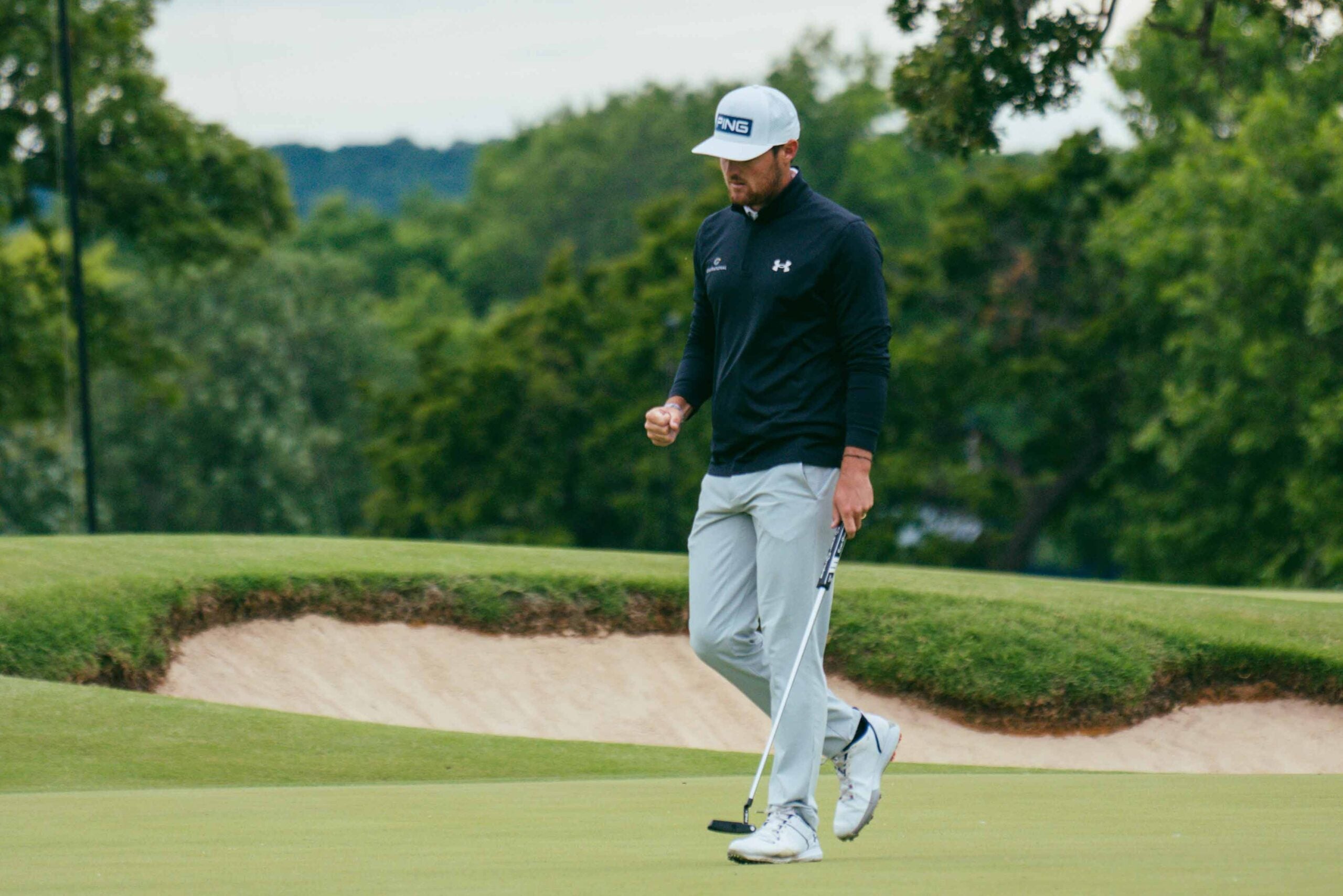
The post-round media car wash is a thorough examination of his psyche. How did he feel, handling the lead all day? How will he handle it tomorrow?
“I mean, yeah, it’s by far the biggest tournament I played,” he says in his post-round presser. “The biggest round of golf I’ve played. And tomorrow is going to be even bigger. I just — I don’t know how to say, just try to keep it simple, try to do the same things that I’ve been doing, try to not even look at the people that’s around me.”
I ask McGuinness what it was like, carrying for such an up-and-down day.
“Well, for me, it’s pretty much all the same,” he says, shrugging. “He’s a guy to mostly leave alone and he works it out on his own. I’ll do my best to feel it out, to change the subject every now and then, say some stupid stuff, get him thinking about something else. But he mostly regulates it all.”
As for caddying in the final pairing?
“I love it. Best feeling in the sport.”
I catch up to Pereira as he’s hopping into a cart. He needs a range session. He taps the seat next to him, indicating I should hop in. He reflexively opens Instagram; a photo of his childhood hero pops up first.
“Wait — Tiger withdrew?”
He’s headed to the range, he says, because he didn’t like that 5-iron on 18. Even though it led to birdie, even though it looked pretty good, it didn’t feel right. “My coach would know, just watching,” he says. “I’ll feel a little better if I can just find a little better feel.”
I leave them to their work. It’s turned into a serene evening; only Pereira and Justin Thomas are still on the range, hitting balls beneath the setting Oklahoma sun.
“It was almost kind of eerie how beautiful it was outside,” Thomas says the next day, thinking back to their night session.
The calm before the storm.
SUNDAY: THE STORM
It’s the longest morning of Mito Pereira’s life.
“It was terrible,” he says later. “This day took, like, 60 hours.”
He watches some of the Formula 1 race, the Spanish Grand Prix. The race leader, Ferrari’s Charles LeClerc, builds a dominant lead before suddenly losing power to his car. He’s forced to retire. It’s a bad omen, but it’s not clear Pereira picks up on it. He can’t sit still.
“I just went crazy. Everything. Felt sick. Mind was racing.”
This is hardly unusual for players in his position; Masters champ Scottie Scheffler said he woke up that Sunday and “cried like a baby” out of stress and anticipation. There’s no way to prepare for the reality of a 54-hole major championship lead. Especially if this is the second major championship of your life.
Finally, mercifully, it’s time to head to the course. He starts to feel a little bit better, getting into his routine, even if he’s on autopilot. One by one, the rest of the competitors leave the practice area and head off to their tee times. Pereira heads to the short-game area. He’s chipping, all alone.
The first and 10th holes share the same tee box, and as Pereira arrives on the tee there’s a stroke of good fortune: Niemann is teeing off No. 10. He pounds driver down the fairway, turns to his countryman and flashes a wide smile. He taps his chest and points to Pereira. Sending love.
Then Pereira is introduced. He hammers driver down the middle of the fairway. Someone yells from the stands.
“RRRRRRAIDER!”
Pereira twirls his club and grabs his tee. It’s game time. Instead of walking after his ball, though, Pereira pauses. He walks to the back of the tee box. Antonia darts around the barrier to give him a good-luck kiss.
If you’ve made it this far, you likely already know what happens next. Pereira clings to his lead as chaos makes its way through the leaderboard. He makes bogey at No. 3 but gets that stroke back when he sticks a wedge to three feet at No. 5. Bogeys at 7 and 8 keep the rest of the field right in it, but still: For most of the day the lead is his, alone.
Playing partner Matt Fitzpatrick starts to slip around the turn, making bogeys at 10 and 11. Zalatoris shoots even par on the front. Everybody seems to be making bogeys. Pereira hooks his tee shot at 12 and is forced to pitch out, leaving himself a 90-yard approach. He sticks that to seven feet but misses the putt. His lead is gone again; he’s tied with Cameron Young at six under, with Zalatoris just one shot back.
But every time Pereira seems certain to collapse, he steadies the ship. A 304-yard tee shot down the middle of the next fairway sets up arguably his shot of the day: a towering hybrid that lands and settles inside 20 feet for eagle. A two-putt birdie means he’s back to seven under. A bogey from Young means his lead is back to two.
Up ahead, Niemann is speaking to the media after his round.
“It is going to be something huge,” Niemann says. “You look back, three, four years ago, nobody talked about golf, and now the whole country is watching TV right now seeing Mito leading the PGA Championship.”
“I cannot imagine him not winning,” he adds.
Pereira makes bogey at 14, the result of a dead pull off the tee. He just misses a 10-footer for birdie at 15. At 16, he leaves his approach shot some 20 yards short.
Roars cascade back through the course. Up ahead, Thomas — who started the day at two under, seven back — has made birdies at 9, 11 and 12. Now he makes one on 17 to get to five under. At 18, Thomas stuffs his approach inside 10 feet just as Pereira steps up to his par putt at 16. But Pereira has plenty of fight in him. This is a soul-tester, a nerve-cruncher, a terrifying 11-foot slider down the hill with the lead on the line. He makes it.
There’s a wait on the 17th tee. Pereira and Fitzpatrick arrive while Zalatoris and Young are hitting their tee shots, which means there’s time to kill — and that they see everything going on up ahead.
Pereira pulls driver. He takes a practice swing. He leans it on his bag, pacing. He wanders over to the cooler and grabs a bag of gummies. He munches on a few, watching the action ahead. Thomas misses his birdie putt at 18 and officially posts the clubhouse lead: five under. Young and Zalatoris each birdie the 17th to get to four and five under, respectively. Pereira knows exactly where he stands: he still holds the lead at six under. Fitzpatrick plays first and hits a dead pull with 3-wood that winds up in the penalty area. Pereira goes next and hits a high cut driver. It starts left and drifts back toward the flag, lands on the fairway and stops, leaving a gentle pitch. He’s in perfect position.
“Agh,” he says later, in a quiet moment. “I thought when I made that putt on 16 and hit a good shot at 17, that was it…”
His pitch lands soft and short, leaving 13 feet for birdie. His birdie putt is destined for the bottom of the cup but runs out of energy. One roll short.


Heartbreak happens quickly, then slowly. And then it hangs around.
You’ve seen the tee shot at No. 18. The way Pereira seems to flinch at impact, as one onlooker put it, like he’d been “electrocuted.” His ball starts down the right side and stays there. A lucky bounce would keep him in the fairway, but the golf gods have other ideas; it lands on the hole’s “kicker” downslope which sends it bounding forward, through a short strip of rough and into the middle of the bottom of the creek.
A murmur runs through the crowd. Some cheer at the idea of a playoff. Others groan in empathy. Many had been rooting for excitement, for chaos and for Thomas. But now that it’s here? It’s not so fun to watch.
There’s nothing easy about the shot he has left after taking a drop: a 200-yard approach up the hill with trees guarding anything hit in the direction of the back-right hole location. He hits it left instead, landing on the edge of the green and rolling off, leaving a 25-yard chip shot down the slope.
Niemann’s behind the green, head in his hands. Munoz is there with him, and Abraham Ancer, who’d played in the third-to-last group, signed his card and hurried back to join them. All three watch in horror as his chip shot rolls across the green and just keeps rolling, all the way onto the fringe.
Antonia dashes over to Niemann just then to confirm with him her fears: that the remaining putt is, in fact, for bogey. That the lead is gone. She’s tearful and Niemann is comforting, offering a hug of consolation. Pereira’s last-ditch effort for bogey — and a spot in the playoff at five under — comes up four feet short. He lips in that putt for double bogey, fishes his ball out of the hole and looks around, wide-eyed. The crowd is equally stunned.
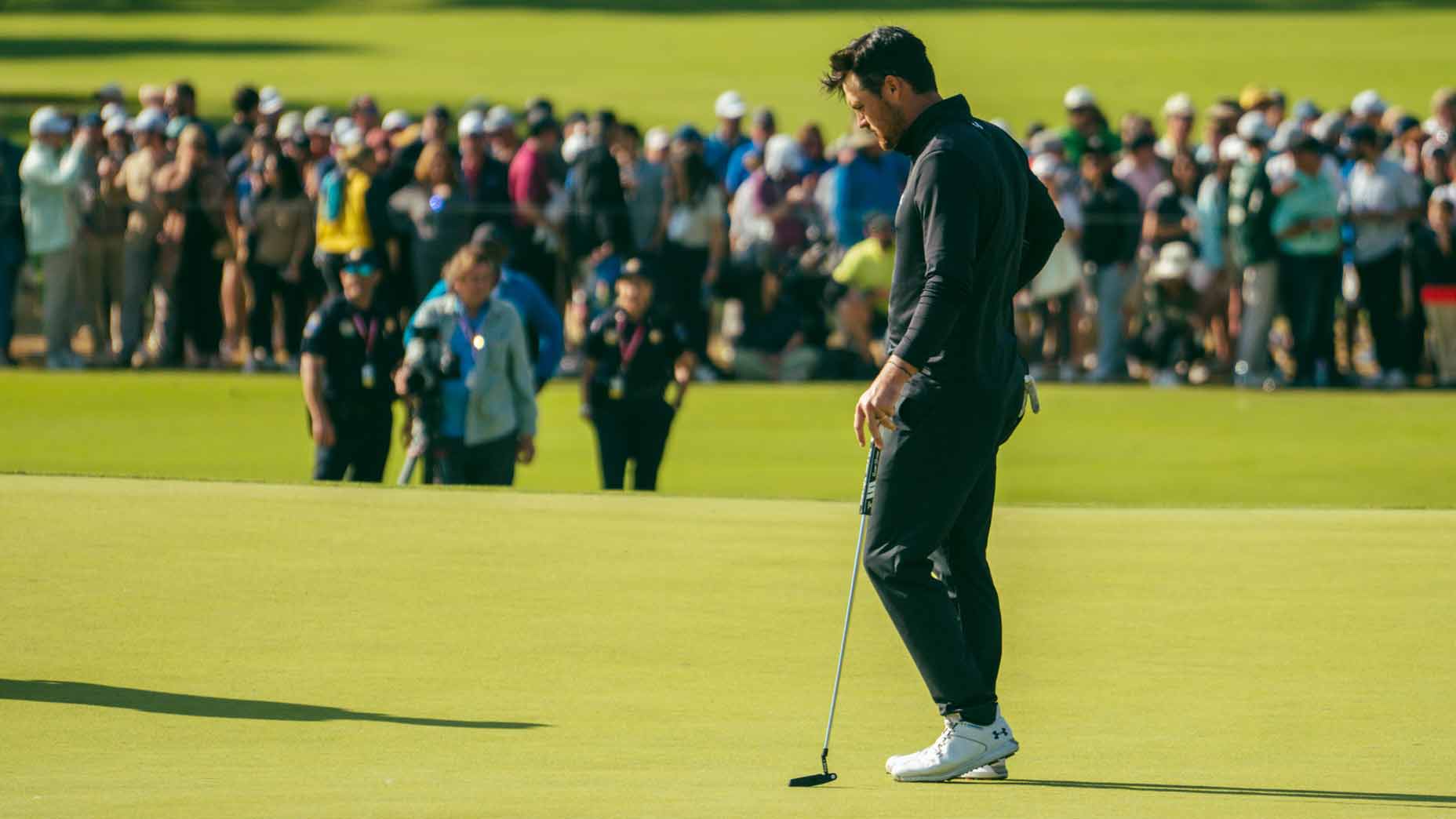
Antonia greets him behind the green; they share a hug, wordless. What can you say in that moment? Niemann swoops in next with an embrace of his own. Pereira looks at the rest of his friends. He winces. Ouch.
He looks visibly hurt as he signs his scorecard. He isn’t angry. He isn’t rude. He doesn’t throw anything. He just looks at his card, and at the television. His entire body just — sags.
But what he does next makes a real impact: He comes out to face the media. He takes questions from reporters. First the assembled pool. Then on CBS, live, with Amanda Balionis Renner.
“It was a weird thing,” he tells her. “I wasn’t thinking about the water. It was weird that it went in. I guess you just have so much pressure in your body, you don’t even know what you’re doing.”
He doesn’t make excuses, doesn’t deny his nervousness, doesn’t hide from what has happened. There are plenty of things professional athletes experience that the rest of us don’t, but these moments of complete and utter failure are the hardest and, for that reason, the most interesting. Trying your damndest, putting yourself out there, losing in front of the world — there’s something honorable in that. And there’s power in facing down what he’d just gone through. By speaking honestly, by processing in real time, he turns a moment of vulnerability into a moment of strength. He gains untold fans in the process.
“I’m just happy with how the week turned out,” he says. “I’m hoping to take this to learn for the future.”
That’s an important point, too. The 18th-hole debacle will cost him $1.83 million and the PGA Championship title, but his T3 is worth $870,000 and will send him from No. 100 in the world inside the top 50. There’s plenty of good news here, too. It just doesn’t feel like it in real time.
A crowd awaits him outside the locker room: Niemann, Munoz, Ancer. Antonia. His team, his friends, his family. He pitches up for a moment. As they perch on golf carts, hats backward, I get the sense I’m looking at a Little League team coming off a loss. They’re bummed out. They’re cracking somber jokes. They’re in this together. It’s good to have friends like these for moments like these.
Inside the locker room, I confess to needing a translator. What did your friends tell you? He pauses.
“Just that they’re sad,” he said. “And that they wanted it for me.”
He starts to talk. To get it all out. “I should have like, played it left,” he says, talking about the tee shot on 18, tracing with his hands the ball flight that would have kept him high and dry. “I hit it bad, but I should have played it left.”
I can see him starting to replay the rest of the round in his head, shot by shot, trying to make sense of it. Searching for one more stroke, somewhere, to get back.
“My swing actually felt good and I hit really good shots but they were just like, a little off,” he says. “Like, one more yard and it was good. Like, on 2, I hit 9-iron and thought I was going to make it and it was short. Just little things that, in the end, add up.”
I tell him I thought people admire his attitude and respect that he’s facing the media after such horror. He musters a smile.
“It was fake,” he said.
Fair enough. What did he want to do?
“Just leave.”
That’s the point, I say. That’s the part people admire. Of course he wanted to leave. Everyone would want to leave. But he didn’t leave. Why not?
“Because I want to be a good guy,” he says. “That’s not what you do.”
He packs his things, shuts his locker, wanders back toward the front. He hands out a couple leftover Ping hats to the staff, then pauses at the exit to make sure his agent has cash for tips. Then he steps out the front door.
It’s empty now, the entire area by the first tee. The crowd has migrated to No. 17, where they’re watching Thomas birdie the second playoff hole. Distant applause is a cruel reminder that there’s a golf tournament still going.
No matter what personal grievance you’ve suffered, the PGA Tour carousel just keeps on spinning. Munoz is sticking around, waiting for Pereira so they can fly together in a small plane to Dallas. There’s another tournament to prep for, after all. The Charles Schwab Challenge starts on Thursday.
“King Air,” Pereira says. I must have looked impressed that he was flying private. “Only six seats. It’s cheap.”
His clubs are making the trip with McGuinness, so he heads down to collect his things from his courtesy car. We start toward the parking lot.
“Last walk, man,” he said, punching my shoulder. “You know what’s weird? That was terrible. And it’s over. And I almost feel, like, relief.”
We get to the car. McGuinness wishes him well. Calls him a legend. “My guy’s going to have plenty of opportunities,” he says. I bid them farewell, thank them for the opportunity and ask Mito one last question.
Now what?
“Well, I just won’t sleep tonight,” he says. I’m not sure if he’s joking or not. I can’t tell if he knows, either. But he seems certain about the next part.
“Then I’ll get ready for the next.”
The author welcomes your comments at dylan_dethier@golf.com.

